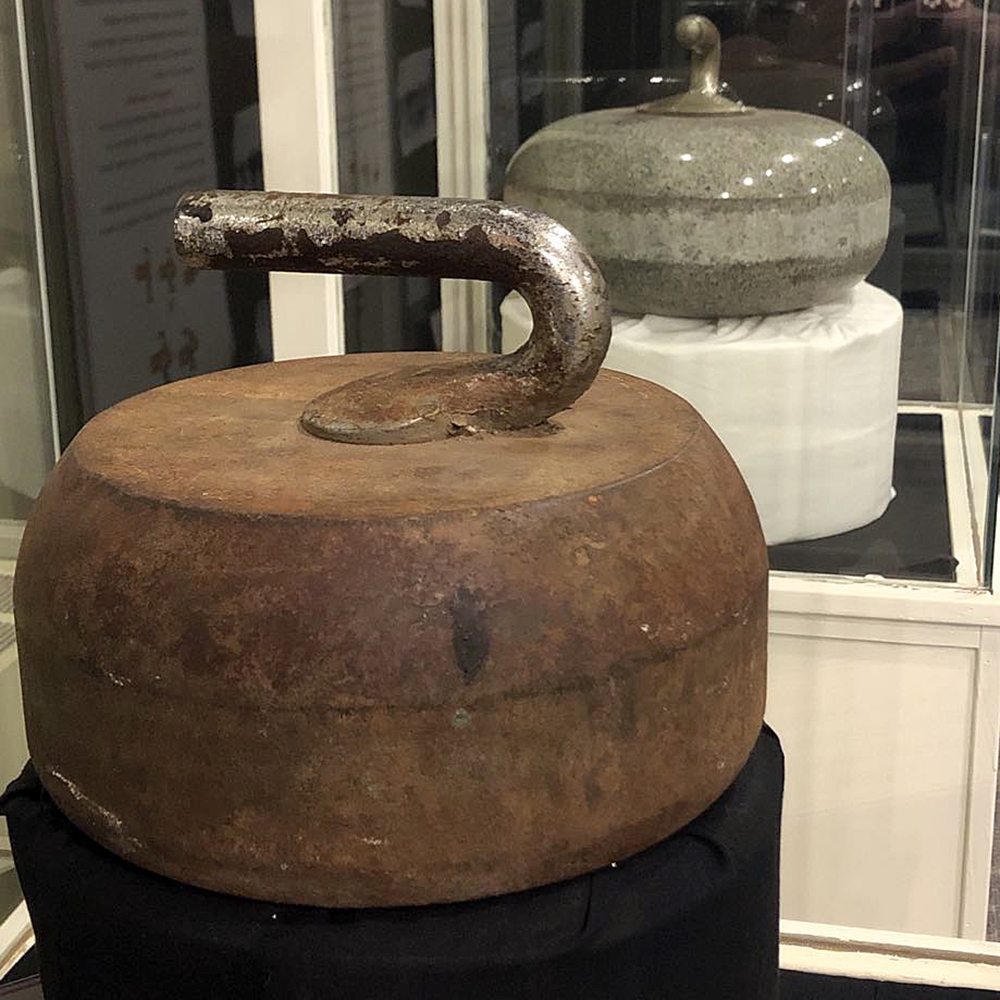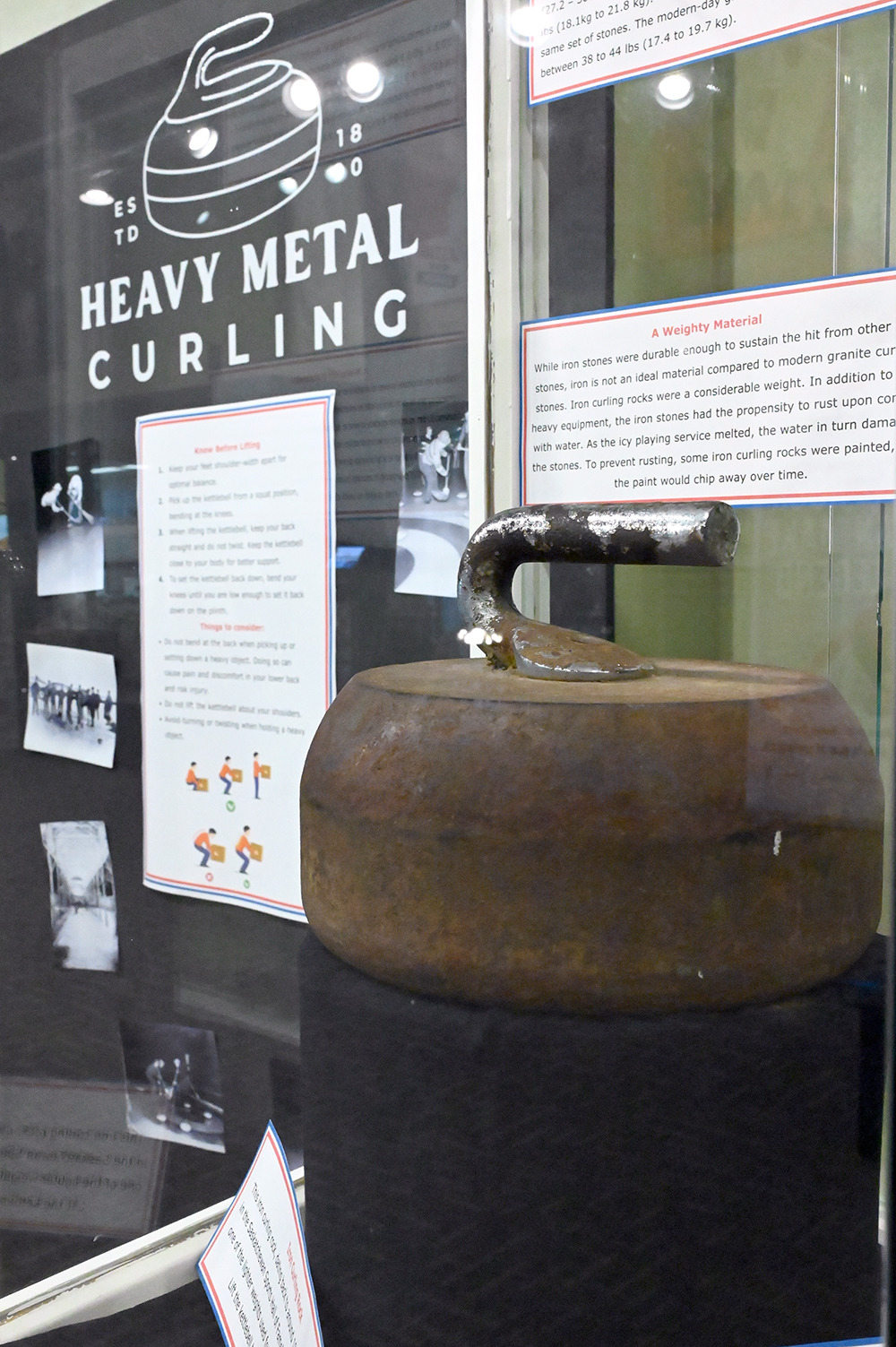One of the oldest items in the Saskatchewan Sports Hall of Fame’s collection is a 60-pound iron curling stone from 1890. The stone is part of our new Heavy Metal Curling display. The iron stone is currently on display behind glass, but a 60-pound kettlebell is also on display to give you a sense of the heft needed to curl in the 19th Century. The iron curling stone is next to a modern granite stone for an easy comparison of the evolution of the curling stone.
Granite is both lighter and better suited to the environments where curling is played. All of the granite for curling stones comes from two places, Ailsa Craig, an island in Scotland, and the Trefor Granite Quarry in Wales. Kays of Scotland has been making stones from the Ailsa Craig granite since 1851.
While granite stones have always been the standard in curling, there was a time in Canada when granite wasn’t as accessible. To meet the need, stones made of iron were developed in Montreal as an alternative with Canada being the only country known to have used them. Iron stones were notably heavier, weighing between 60-80 lbs. (27.2-36.3 kg) compared to modern granite stones which are 44.1 lbs. (20 kg). Iron stones were also less than ideal due to their propensity to rust during exposure to ice and water.
Our Heavy Metal Curling display also features historic photos and information from the early years of curling in Saskatchewan.

